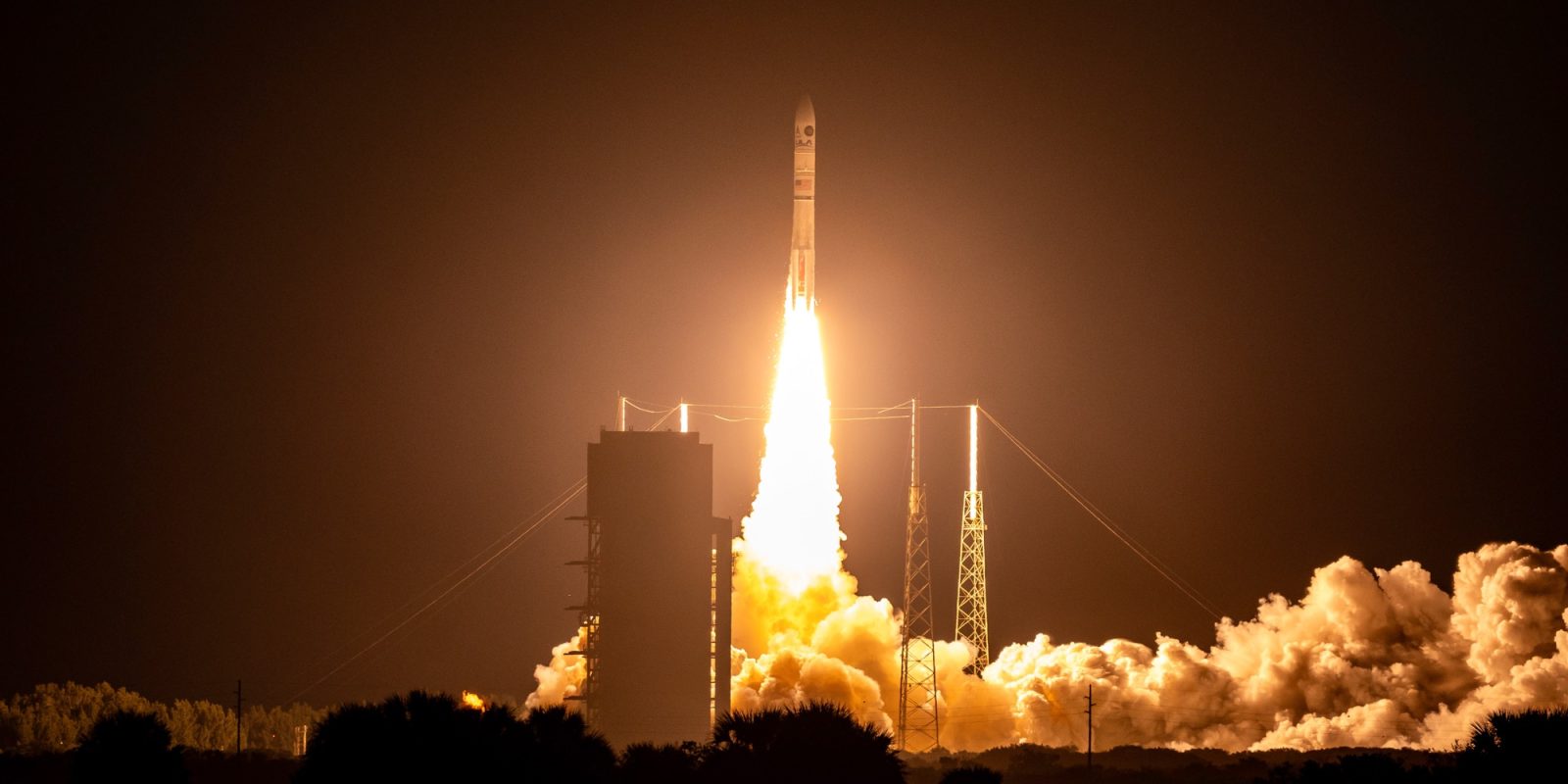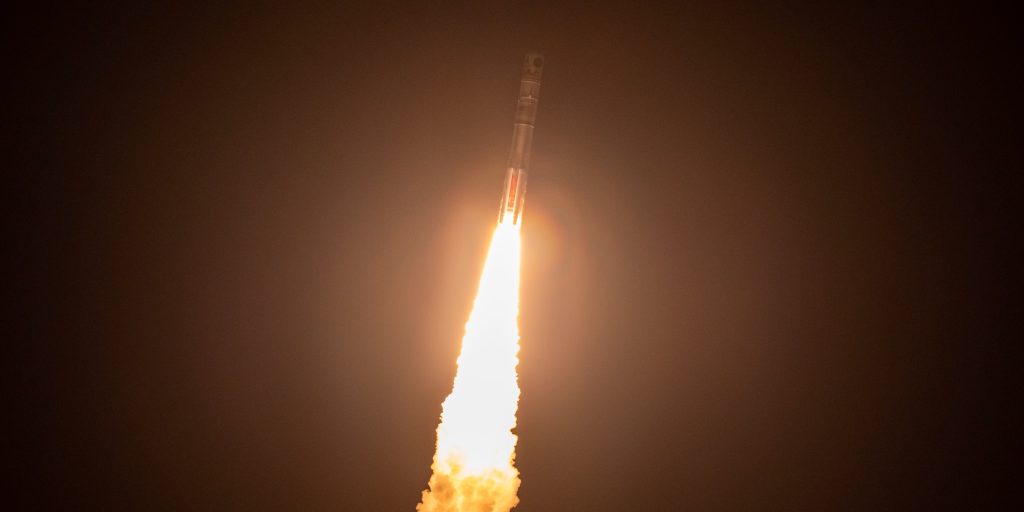
Last week, ULA made its national security debut with its Vulcan rocket, launching the USSF-106 mission to a geostationary orbit. With this major milestone finally in ULA’s past, what is next for what has been dubbed ULA’s answer to SpaceX’s Falcon 9?
ULA’s delayed launch of a DoD payload on Vulcan has been a milestone the company has been working towards since last year. It was previously expected to come by the end of 2024, then early 2025.
After Vulcan’s second certification flight, which flew a concrete mass simulator, an investigation was needed into an anomaly on one of the rocket’s solid rocket motors that caused a delay of months. After receiving certification from the Space Force in March, work to finish fixing the SRM defect and then syncing timelines with the DoD, it was finally time for launch.
Last week’s launch went off as flawlessly as you can expect a ULA launch to go. Vulcan performed perfectly, deploying the test satellite into orbit and showed off its capability of direct-to-geostationary orbit rather than a transfer orbit like most providers. This direct injection into an orbit can save years’ worth of fuel for station keeping for the satellite.
This was ULA’s third launch of 2025, its first for Vulcan. Until last week, ULA had only launched Kuiper missions for Amazon on its soon-to-be-retired Atlas V rocket. However, what happened to the 20+ launches ULA stated it would meet by the end of the year? Will ULA ever meet the rates that we see SpaceX performing?
ULA’s CEO Tory Bruno revised the company’s launch goal for 2026, bringing it down to no more than nine launches for the year. While if this happens, it would be its biggest launch year since 2016, it is a disappointment to those looking to see ULA finally return to a steady launch cadence.

Since SpaceX‘s rise to popularity for commercial and government launch contracts, ULA’s launch rate has steadily declined, its legacy Atlas and Delta rockets unable to compete against the new commercial operators.
Vulcan is supposed to be ULA’s answer to staying relevant with SpaceX’s dominance and the expected rise of Blue Origin‘s New Glenn rocket.
With Space Force certification under its belt, ULA’s remainder of the launch year has multiple DoD satellites on it, including a new GPS satellite. Another mission on the books is Sierra Space’s Dream Chaser, a reusable spaceplane that will hopefully deliver cargo to the International Space Station. However, that vehicle has yet to meet one of its mission milestones, making it a high likelihood of a delay into next year.
Space Explored’s Take
ULA’s future could be viewed in one of two ways. First, the arrival of Vulcan has not changed the fact that the company is still behind SpaceX and Blue Origin in reusability and cost-per-kilogram. Or second, ULA’s position as just a launch company and Vulcan’s success in gaining commercial contracts could cement it as a long-term player as the last remaining dedicated launch provider.
First, the elephant in the room. While Vulcan has finally come to play and bring the much-needed competition to SpaceX’s Falcon 9 rocket, SpaceX is already looking at that rocket’s retirement for Starship. Will Vulcan continue to compete commercially once Starship begins taking orders? That will be the major question as we round out the 2020s, if Starship is actually attractive to the DoD, NASA, and the commercial market at large.
There is still an opportunity for ULA to survive fully reusable rockets like Starship, as those are usually much larger than Vulcan. The industry has been moving towards smaller satellites for over a decade now, with rideshares and constellations being the new path forward. Rockets like Vulcan might remain attractive to those missions if SpaceX retires the Falcon 9.
For the second argument, we have to look at Starlink, as it’s easy to treat those as traditional launches for SpaceX when, in fact, they truly are not. So far in 2025, over 70% of SpaceX’s launches have been for Starlink, an internal launch for which the company is not paid. While the profit is in Starlink’s service subscriptions, it means that SpaceX’s paid launches are more in the mid-20s for the year than in the triple digits.
ULA, on the other hand, signed a massive contract to supply nearly half of Amazon’s Kuiper satellites with Vulcan and the Atlas V. These are PAID launches and will help bring ULA’s launch goals up to the 20s next year. Between that and the desire from the DoD to have three launch providers for national security missions, ULA could remain a competitive option for contracts like these in the future against both Blue Origin and SpaceX.
What will be different for ULA compared to others will be the lack of “space at scale” that other companies have been pushing in recent years. Rocket Lab is a great example; there is almost nothing that company can’t do in space, from launches to solar panels; it can produce anything. SpaceX followed with satellite manufacturing, and Blue Origin is en route as well.
Does this put ULA at a disadvantage? Unlikely, it will likely thrive in its decision to have a smaller, more dedicated mission as launchers. It may not ever be the cheapest, but it could end up being the best at what they do if they put emphasis on launch timelines, capability, and trust.
FTC: We use income earning auto affiliate links. More.


Comments